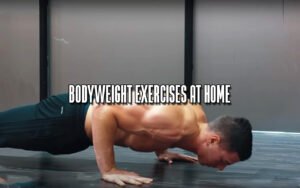

The dumbbell chest fly works your chest, shoulders, and arms. During the chest workout, learn how to do a safe and controlled dumbbell fly. You can get chest gains without injuring yourself or breaking your dumbbells with the right exercises.
According to weight room experts and exercise warriors, the bench is the best method to create a big, powerful chest. Your chest-focused bench workouts shouldn’t begin and end with the barbell bench press or even with any other pressing variation you might fancy. To give more attention to your inner chest and round out your pectorals, grab some dumbbells to fly.
The dumbbell chest fly is a movement that allows you to focus on squeezing the pectoral muscles, which can stimulate muscle growth rather than relying on the brute strength that so frequently drives the bench press. Dumbbells are a reasonably versatile tool since you may perform any movement using them. However, to prevent yourself from harm, you must work to control each rep not to put yourself at risk of injury. Before you get to the bench, check your ego and make sure you pick up a weight that you can handle safely.
Instead of putting down on the bench and flapping your arms like a bird to learn this movement, take some time to watch this video and read the following instructions. We show several subtle form pointers that may transform your biceps fly with dumbbells from a perfunctory accessory exercise to a genuine muscle builder.
Squeeze at the Top
The real magic and value of the dumbbell fly occur when your arms are brought together, rather than when they’re at their widest. At this point, you have the opportunity to work your pectoral muscles and increase chest size. Concentrate on this squeeze, visualizing yourself staying at the top for a great second to get the most out of your fly.
Touching the dumbbells at the top may be dangerous since it removes the opportunity to squeeze your pectorals fully. You’ll be able to squeeze your chest much better if you can perform the movement slowly and precisely. As well, if you’re driving the dumbbells up so quickly that they clank together, you won’t be able to get that chest squeeze. Take your time with each repetition.
Never Lower Too Deep
Remember that the magic of the fly happens at the top, not the bottom. Don’t be too aggressive in lowering your shoulders extra-deep to overstretch your pectorals.
Keep your upper arms parallel to the ground, and don’t worry about going too far. It isn’t a flexibility exercise; you’re focusing on size, strength, and definition. Shoulder range of motion isn’t always ideal for everyone, especially if you spend most of your day sitting at a computer. Keep the dumbbells at chest level until you feel a slight stretch in your chest; if you over-stretch your shoulders or biceps, keep them at chest height. A good starting point: Consider reducing until your upper arms are parallel to the ground or slightly deeper.
Never Stop Squeezing Your Shoulder Blades
Begin each dumbbell fly set by pushing your shoulder blades into the bench and squeezing them as you lower the weights. This will help protect your shoulders. However, as you rise upwards, maintain your shoulder blades squeezed together. It also offers you two benefits. The first thing to remember is that it will once again assist you in protecting your shoulders. When you fly up, your shoulder puts a lot of pressure on the joint and may even compress it. It restricts the movement of your rotator cuff tendons, leaving less space for them to work. You assist in maintaining this position by squeezing your shoulder blades.
Even better, if you maintain your shoulder blades together throughout the dumbbell fly, it will force your chest to squeeze at the top of each rep. The distinction is minor: If you free your shoulder blades at the top of a rep, you can effectively bring the entire shoulder complex along for the ride.
However, if you keep pinching hard on that rhomboid, your shoulder blades will remain tight, and your shoulders will stay down. This implies that the pectoral muscle is the only one to contract during the final squeeze with a dumbbell fly. Even if it feels as though it restricts your range of motion, this isn’t the case. It’s just about taking the time to allow your pectorals to operate in their natural range rather than unnecessarily expanding the movement.









Blog Comments
Top 25 Home Workouts - Home Workout Reviews
February 14, 2022 at 8:07 pm
[…] Push-ups put a lot of stress on the wrist joints. You may try using dumbbells and grip the handles instead of placing your hands on the floor to reduce some of this stress. When performing dips from a higher position, such as with dumbbells, you don’t need to bring your chest or chin to the floor; instead, descend until your chest or chin are in level with the dumbbell handles. […]